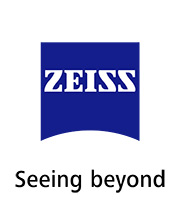Czech Phycology 1: 93-101, 2001
Algae and blue-green algae as mosquito food [in Czech]
Řasy a sinice v potravě komárů
- 1 Státní zdravotní ústav, Šrobárova 48, CZ - 100 42 Praha
- 2 Katedra fyziologie a anatomie rostlin, Přírodovědecká fakulta Masarykovy University, Kotlářská 2, CZ - 611 37 Brno
Ten genera of cyanophytes and 73 genera of algae were found in the guts of Aedes, Culex, Anopheles and Culiseta larvae collected in various breeding places of the Elbe-Lowland (Bohemia) and Prague. The quality and quantity of blue-green algae and algae found in mosquito guts depended on their presence in the water of mosquito breeding places and on the feeding type (filter fieders, scrapers) of mosquito larvae. Chlorophycean algae possesing cell wall with sporopollenin and algae with a mucilagenous (jelly) envelope appeared undamaged by the digestive process. Also spores and resting stages tended to pass undamaged through the larval intestine tract.
Published: March 1, 2001 Show citation
References
- ALI, A. (1990): Seasonal changes of larval food and feeding of Chironomus crassicaudatus (Diptera:Chironomidae) in a subtropical lake. J. Amer. Mosq. Contr. Assoc. 6: 84-87
- ARNOLD, A., CEPÁK, V., RETTICH, F. (1994): Isolation of coccal cyanophytes - prospective carriers of endotoxin genes - from tropical mosquito breeding places. Abs. 9th European SOVE Meeting. Barcelona. 26
- BARBER, M.A. (1927): The food of Anopheline larvae. Pub. Health Rep. U.S. Pub. Health Service 42: 22.
 Go to original source...
Go to original source... - CEPÁK, V., RETTICH, F. (2001): Sceening of cyanophytes from mosquito breeding places with emphasis on unicellular species - potential recipiens of Bti genes. Algolocical Studies.(v tisku).
- DAHL, C. (1988): Control potential in feeding mechanisms of mosquito larvae. Bull. Soc. Vector Ecol. 13:295-303.
- DE MARSAC, N.T., TORRE, F., SZULMAJSTER, J. (1897): Expression of the larvicidal gene of Bacillus shaericus 1593M in the cyanobacterium Anacystis nidulans R2. Mol. Gen. Genet. 109: 396-398.
- DOUEK, J., EINAV, M., ZARITSKY, A. (1992): Sensitivity to planting of Esherichia coli cells expressing the cytA gene from Bacillus thuringiensis var. israelensis. Mol. Gen. Genet. 232: 162-165.
 Go to original source...
Go to original source... - GOLDBERG, L. J, MARGALIT J. (1997): A bacterial spore demonstrating rapid larvicidal activity against Anopheles sergentii, Uranotaenia unguiculata, Culex univitatus, Aedes aegypti and Culex pipiens. Mosquito News 37: 355-358.
- HOWLAND, L. (1930) : Bionomical investigation of English mosquito larvae with special reference to their algal food. Journ. Ecology 18: 81-125
 Go to original source...
Go to original source... - KHAWALED, K., MULLA,M., ZARITSKY, A. (1989): Distribution and abundance of algae in mosquito development sites. Bull.Soc.Vector Ecol. 14: 71-80
- LAIRD, M. (1988): The natural history of larval mosquito habitats. Academic Press. 555 str. MARTEN, G.,G. (1986): Phytoplankton management for mosquito control: potential of indegestible green algae. J. Trop. Med. Hyg. 89:213-222.
- MERRITT, R.W., OLDS, E.J., WALKER, E.D. (1990): Natural food and feeding behavior of Coquillettidia perturbans larvae. J. Amer. Mosq. Contr. Assoc. 6: 35-42
- NILSSON, C. (1987): Feeding and food utilization by mosquito larvae. Disertační práce. Kat.zoologie. Uviv. Uppsala. 269 str.
- RETTICH, F. (1994): Současné možnosti hubení komárů při jejich kalamitním výskytu. Zpravodaj sdružení DDD 3: 25-30.
- RUDOLFS, W. (1926): Food of mosquito larvae. Proc. 12th Ann. Meeting, New Jersey Mosq. Exterm. Assoc.:25-53.
- SENIOR-WHITE, R. (1928): Algae and the food of Anopheline larvae. Ind. J. Med. Res 15: 960-988.
- SLÁDEČEK, V. a kol. (1989): Biologický rozbor vod. Vydavatelství norem. 103 str. THIERY, I., NICOLAS, L., RIPPKA, R., DE MARSAC, N.,T (1991): Selection of Cyanobacteria isolated from mosquito breeding sites as a potentioal food source for mosquito larvae. App. Environ. Microbiol., 57:1354-1359.
 Go to original source...
Go to original source...



